-
 Bitcoin
Bitcoin $76,479.4701
-3.52% -
 Ethereum
Ethereum $1,469.1142
-5.46% -
 Tether USDt
Tether USDt $0.9993
-0.03% -
 XRP
XRP $1.7902
-4.83% -
 BNB
BNB $551.0674
-0.78% -
 USDC
USDC $1.0003
0.02% -
 Solana
Solana $105.4201
-1.56% -
 TRON
TRON $0.2301
0.50% -
 Dogecoin
Dogecoin $0.1423
-4.38% -
 Cardano
Cardano $0.5589
-4.51% -
 UNUS SED LEO
UNUS SED LEO $9.0173
0.56% -
 Toncoin
Toncoin $3.0027
-2.56% -
 Chainlink
Chainlink $10.9146
-4.73% -
 Stellar
Stellar $0.2207
-4.45% -
 Avalanche
Avalanche $16.1527
-4.24% -
 Shiba Inu
Shiba Inu $0.0...01066
-6.81% -
 Sui
Sui $1.9318
-3.99% -
 Hedera
Hedera $0.1462
-4.08% -
 MANTRA
MANTRA $6.2098
-1.18% -
 Dai
Dai $1.0001
0.01% -
 Bitcoin Cash
Bitcoin Cash $268.3547
-2.84% -
 Polkadot
Polkadot $3.3678
-6.32% -
 Litecoin
Litecoin $69.1437
-2.09% -
 Ethena USDe
Ethena USDe $0.9986
-0.03% -
 Bitget Token
Bitget Token $3.9888
-4.59% -
 Hyperliquid
Hyperliquid $11.6557
0.72% -
 Pi
Pi $0.5672
-1.97% -
 Monero
Monero $196.0247
-4.01% -
 OKB
OKB $51.1597
0.14% -
 Uniswap
Uniswap $4.7818
-6.32%
What does blockchain mining mean and what is the role of miners?
Blockchain mining validates transactions and adds them to the blockchain, securing the network and introducing new coins, with miners competing to solve complex puzzles.
Apr 07, 2025 at 02:01 am
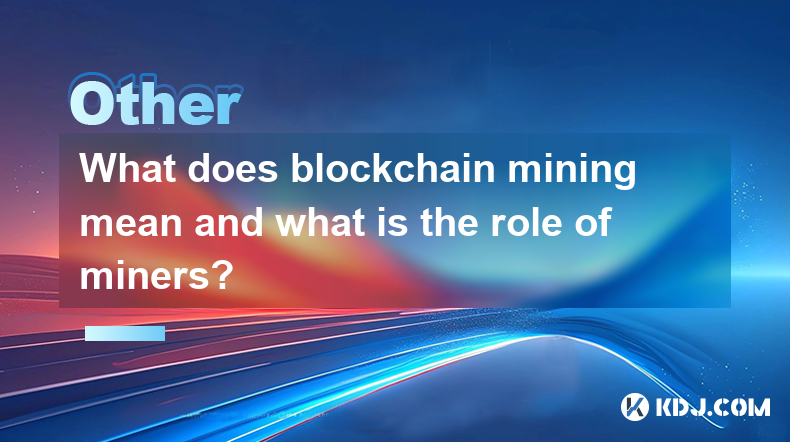
Blockchain mining is a critical process in the world of cryptocurrencies, particularly for networks like Bitcoin and Ethereum. It involves solving complex mathematical problems to validate transactions and add them to the blockchain. Miners use specialized hardware to compete in solving these puzzles, and the first to solve it gets the right to add a new block of transactions to the blockchain. This process not only secures the network but also introduces new coins into circulation. Miners are essential because they maintain the integrity and security of the blockchain by verifying and recording transactions.
What is Blockchain Mining?
Blockchain mining is the process by which transactions are verified and added to the public ledger, known as the blockchain. This process involves miners using computational power to solve cryptographic puzzles. Once a puzzle is solved, the miner can add a new block of verified transactions to the blockchain. This not only confirms the transactions but also releases new cryptocurrency into the system as a reward for the miner's effort. The difficulty of these puzzles adjusts automatically to ensure that blocks are added at a consistent rate, maintaining the stability of the network.
Mining is crucial for the decentralized nature of cryptocurrencies. Without miners, there would be no way to confirm transactions, making the system vulnerable to fraud and double-spending. The process also ensures that the network remains secure against attacks, as altering any part of the blockchain would require re-mining all subsequent blocks, which is computationally infeasible. This makes blockchain a tamper-proof ledger, fostering trust in the system.
The Role of Miners
Miners play a pivotal role in the blockchain ecosystem. They are responsible for maintaining the integrity and security of the blockchain by validating transactions. This involves checking the authenticity of transactions and ensuring that no double-spending occurs. Miners collect transactions from the network, group them into blocks, and then compete to solve the cryptographic puzzle associated with that block. The first miner to solve the puzzle gets to add the block to the blockchain and is rewarded with newly minted cryptocurrency and transaction fees.
Miners also contribute to the decentralization of the network. By having numerous miners around the world, the control of the blockchain is distributed, preventing any single entity from gaining control over the network. This decentralization is a key feature of cryptocurrencies, ensuring that they remain free from centralized control and censorship. Miners, therefore, are not just participants but guardians of the blockchain's principles.
The Process of Mining
The process of mining involves several steps that miners must follow to successfully add a new block to the blockchain. Here is a detailed look at these steps:
Collecting Transactions: Miners gather unconfirmed transactions from the network's memory pool. These transactions are waiting to be verified and added to the blockchain.
Creating a Block: Miners group these transactions into a block. Each block contains a list of transactions, a reference to the previous block (creating a chain), and other data like a timestamp.
Solving the Puzzle: Miners use their computational power to solve a cryptographic puzzle. This puzzle is designed to be difficult to solve but easy to verify. The solution to this puzzle is called a "proof of work."
Adding the Block: The first miner to solve the puzzle gets to add the block to the blockchain. This miner broadcasts the new block to the network, and other nodes verify the solution. If the solution is correct, the block is added, and the miner is rewarded.
Receiving Rewards: The miner who successfully adds a new block receives a reward in the form of newly minted cryptocurrency and transaction fees from the transactions included in the block. This incentivizes miners to continue participating in the network.
Types of Mining
There are several types of mining methods used in the cryptocurrency world, each with its own set of characteristics and requirements. Here are the main types:
CPU Mining: Initially, mining was done using central processing units (CPUs). This method is now outdated for most cryptocurrencies due to its low efficiency and high energy consumption relative to the rewards.
GPU Mining: Graphics processing units (GPUs) are more efficient than CPUs for mining. They are commonly used for mining cryptocurrencies like Ethereum. GPUs offer a better balance between cost and performance, making them popular among miners.
ASIC Mining: Application-Specific Integrated Circuits (ASICs) are specialized hardware designed specifically for mining. They are highly efficient and powerful, making them the preferred choice for mining Bitcoin and other SHA-256 based cryptocurrencies. However, they are expensive and can only mine specific algorithms.
Cloud Mining: This method involves renting computational power from a remote data center. It allows individuals to mine without the need for expensive hardware. However, it comes with risks such as potential scams and fluctuating profitability.
Challenges and Considerations in Mining
Mining is not without its challenges and considerations. One of the primary concerns is the high energy consumption associated with mining, particularly with ASICs. The environmental impact of mining has led to debates about the sustainability of cryptocurrencies. Miners must also consider the cost of electricity, hardware maintenance, and the potential for diminishing returns as more miners join the network and the difficulty of mining increases.
Another challenge is the centralization of mining power. Large mining pools can dominate the network, potentially leading to a concentration of power that goes against the decentralized ethos of cryptocurrencies. Miners must also stay updated with the latest technology and algorithms, as changes in the network can affect their profitability. For instance, the transition from proof of work to proof of stake in some cryptocurrencies has significant implications for miners.
The Future of Mining
The future of mining is likely to see significant changes as the cryptocurrency landscape evolves. Innovations in technology and shifts in consensus mechanisms could alter the role of miners. For instance, the move towards proof of stake in some networks reduces the need for energy-intensive mining, potentially making the process more environmentally friendly. Additionally, the development of more efficient mining hardware and the rise of decentralized finance (DeFi) could further shape the mining landscape.
As cryptocurrencies continue to gain mainstream acceptance, regulatory scrutiny may also impact mining operations. Governments around the world are beginning to address the environmental and economic implications of mining, which could lead to new regulations and standards. Miners will need to adapt to these changes while continuing to secure and maintain the integrity of blockchain networks.
Common Questions Related to Blockchain Mining and the Role of Miners
Q: What is the primary purpose of blockchain mining?
A: The primary purpose of blockchain mining is to validate and add transactions to the blockchain, ensuring the integrity and security of the network. Miners solve complex mathematical problems to achieve this, and in return, they are rewarded with cryptocurrency.
Q: How do miners earn rewards?
A: Miners earn rewards by being the first to solve the cryptographic puzzle associated with a block of transactions. The reward consists of newly minted cryptocurrency and transaction fees from the transactions included in the block.
Q: What is the difference between CPU, GPU, and ASIC mining?
A: CPU mining uses central processing units, which are less efficient and outdated for most cryptocurrencies. GPU mining uses graphics processing units, offering a better balance between cost and performance. ASIC mining uses specialized hardware designed specifically for mining, making it highly efficient but expensive and limited to specific algorithms.
Q: What are the environmental concerns associated with mining?
A: The high energy consumption of mining, particularly with ASICs, raises significant environmental concerns. The process can contribute to carbon emissions and energy usage, leading to debates about the sustainability of cryptocurrencies.
Q: How does the difficulty of mining affect miners?
A: The difficulty of mining adjusts automatically to ensure that blocks are added at a consistent rate. As more miners join the network, the difficulty increases, potentially reducing individual miners' chances of solving the puzzle and earning rewards. This can affect the profitability of mining operations.
Q: What is the role of mining pools?
A: Mining pools are groups of miners who combine their computational resources to increase their chances of solving the cryptographic puzzle and earning rewards. The rewards are then distributed among the pool members based on their contributed resources. Mining pools can help smaller miners compete with larger operations but can also lead to centralization of mining power.
Q: How might the future of mining change with new technologies?
A: The future of mining could see shifts towards more energy-efficient consensus mechanisms like proof of stake, reducing the need for traditional mining. Innovations in hardware and the rise of decentralized finance could also impact the mining landscape, potentially making it more accessible and sustainable.
Q: What regulatory challenges might miners face?
A: As cryptocurrencies gain mainstream acceptance, miners may face increased regulatory scrutiny. Governments may impose new regulations addressing the environmental impact and economic implications of mining, requiring miners to adapt their operations to comply with these standards.
Disclaimer:info@kdj.com
The information provided is not trading advice. kdj.com does not assume any responsibility for any investments made based on the information provided in this article. Cryptocurrencies are highly volatile and it is highly recommended that you invest with caution after thorough research!
If you believe that the content used on this website infringes your copyright, please contact us immediately (info@kdj.com) and we will delete it promptly.
- "Cardano (ADA) Price Could Dip Below $0.60, Following Previous Market Cycle"
- 2025-04-09 05:10:12
- BONK, the well-known meme coin, has risen over 35% in the last week, attracting meme coin investors in the market. So, what caused this rally?
- 2025-04-09 05:10:12
- Bitcoin (BTC) Investors May Not Exactly Feel It, but BTC Has Been a Relatively Good Bet
- 2025-04-09 05:05:12
- Donald's Bitcoin (DONBTC) Could Turn Early Investors into Multi-Millionaires, Like Shiba Inu (SHIB) and Dogecoin (DOGE) Did
- 2025-04-09 05:05:12
- 6 Upcoming Kraken Listings That Could Be the Next Big Thing in Crypto
- 2025-04-09 05:00:13
- COTI Unveils New Privacy-Focused Blockchain to Reshape Web3 Transactions
- 2025-04-09 05:00:13
Related knowledge
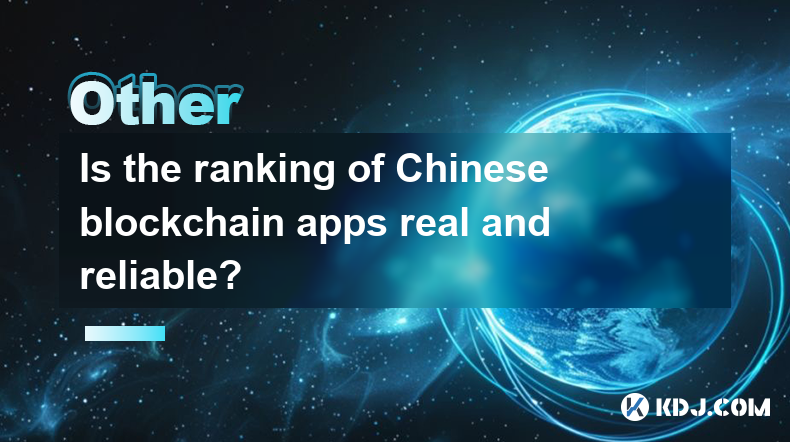
Is the ranking of Chinese blockchain apps real and reliable?
Apr 04,2025 at 09:01pm
The ranking of Chinese blockchain apps has become a topic of interest for many in the cryptocurrency community, as it provides insights into the popularity and adoption of blockchain technology within China. However, the reliability and authenticity of these rankings are often questioned. This article aims to delve into the factors that influence these ...
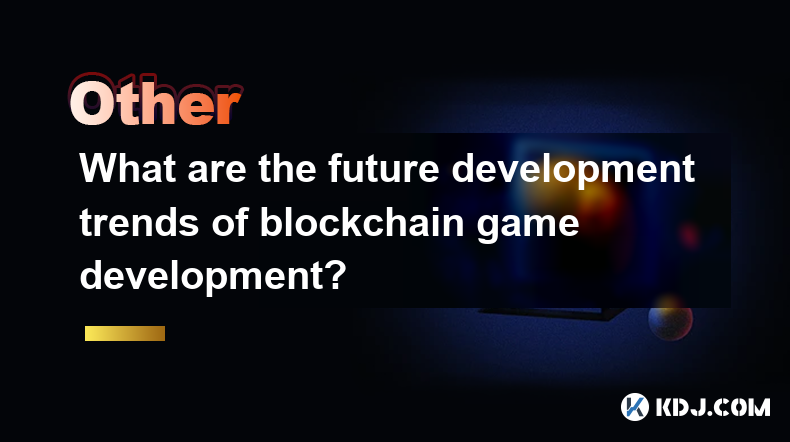
What are the future development trends of blockchain game development?
Apr 03,2025 at 05:00am
Blockchain technology has revolutionized various industries, and gaming is no exception. As we look to the future, several trends are set to shape the development of blockchain games. These trends not only promise to enhance the gaming experience but also to integrate blockchain technology more seamlessly into the gaming ecosystem. Let's explore these t...
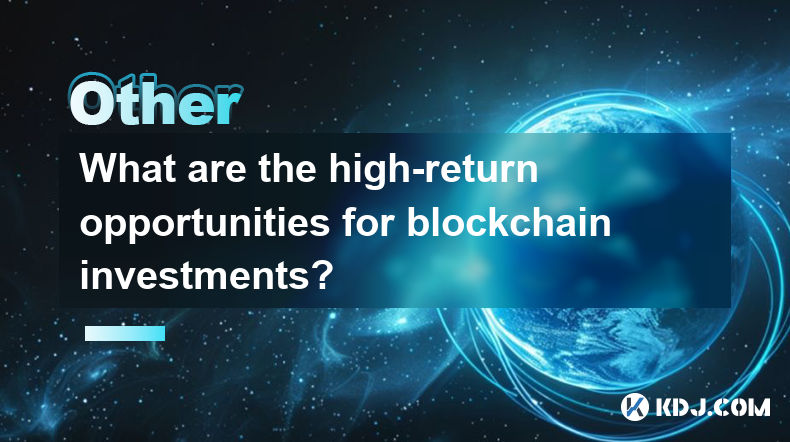
What are the high-return opportunities for blockchain investments?
Apr 05,2025 at 02:35pm
Blockchain technology has revolutionized the financial world, offering numerous high-return investment opportunities. These opportunities span various sectors within the cryptocurrency ecosystem, including cryptocurrencies, decentralized finance (DeFi), non-fungible tokens (NFTs), and blockchain startups. Each of these areas presents unique risks and re...
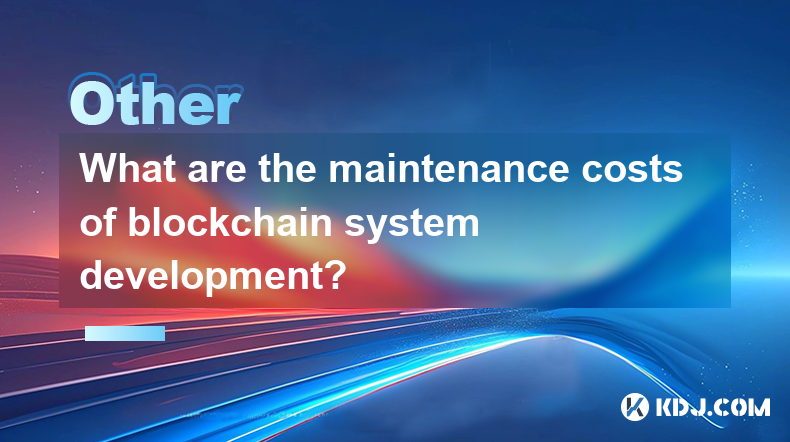
What are the maintenance costs of blockchain system development?
Apr 03,2025 at 06:07pm
The maintenance costs of blockchain system development are multifaceted and depend on various factors. These costs can include technical maintenance, security updates, infrastructure expenses, and personnel costs. Understanding these elements is crucial for anyone planning to develop or maintain a blockchain system. Technical MaintenanceTechnical mainte...
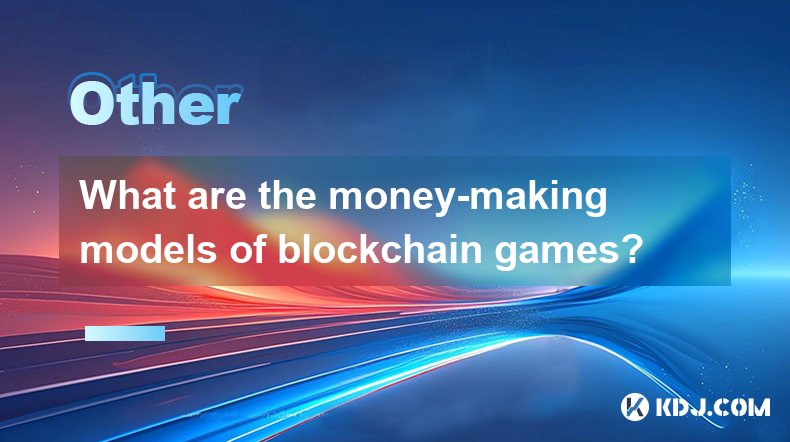
What are the money-making models of blockchain games?
Apr 04,2025 at 02:00pm
Blockchain games have emerged as a revolutionary way for players to earn real money while enjoying their favorite pastime. These games leverage the power of blockchain technology to create unique money-making models that benefit both the players and the developers. In this article, we will explore the various money-making models of blockchain games and ...
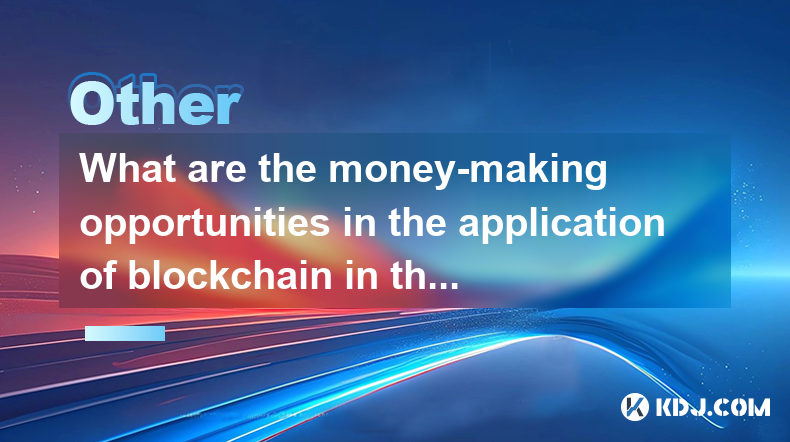
What are the money-making opportunities in the application of blockchain in the field of Internet of Things?
Apr 05,2025 at 10:35pm
The integration of blockchain technology with the Internet of Things (IoT) presents numerous money-making opportunities. Blockchain, with its decentralized and secure nature, can revolutionize how IoT devices interact, manage data, and conduct transactions. This article will explore various avenues where entrepreneurs, developers, and investors can capi...

Is the ranking of Chinese blockchain apps real and reliable?
Apr 04,2025 at 09:01pm
The ranking of Chinese blockchain apps has become a topic of interest for many in the cryptocurrency community, as it provides insights into the popularity and adoption of blockchain technology within China. However, the reliability and authenticity of these rankings are often questioned. This article aims to delve into the factors that influence these ...

What are the future development trends of blockchain game development?
Apr 03,2025 at 05:00am
Blockchain technology has revolutionized various industries, and gaming is no exception. As we look to the future, several trends are set to shape the development of blockchain games. These trends not only promise to enhance the gaming experience but also to integrate blockchain technology more seamlessly into the gaming ecosystem. Let's explore these t...

What are the high-return opportunities for blockchain investments?
Apr 05,2025 at 02:35pm
Blockchain technology has revolutionized the financial world, offering numerous high-return investment opportunities. These opportunities span various sectors within the cryptocurrency ecosystem, including cryptocurrencies, decentralized finance (DeFi), non-fungible tokens (NFTs), and blockchain startups. Each of these areas presents unique risks and re...

What are the maintenance costs of blockchain system development?
Apr 03,2025 at 06:07pm
The maintenance costs of blockchain system development are multifaceted and depend on various factors. These costs can include technical maintenance, security updates, infrastructure expenses, and personnel costs. Understanding these elements is crucial for anyone planning to develop or maintain a blockchain system. Technical MaintenanceTechnical mainte...

What are the money-making models of blockchain games?
Apr 04,2025 at 02:00pm
Blockchain games have emerged as a revolutionary way for players to earn real money while enjoying their favorite pastime. These games leverage the power of blockchain technology to create unique money-making models that benefit both the players and the developers. In this article, we will explore the various money-making models of blockchain games and ...

What are the money-making opportunities in the application of blockchain in the field of Internet of Things?
Apr 05,2025 at 10:35pm
The integration of blockchain technology with the Internet of Things (IoT) presents numerous money-making opportunities. Blockchain, with its decentralized and secure nature, can revolutionize how IoT devices interact, manage data, and conduct transactions. This article will explore various avenues where entrepreneurs, developers, and investors can capi...
See all articles






















































































